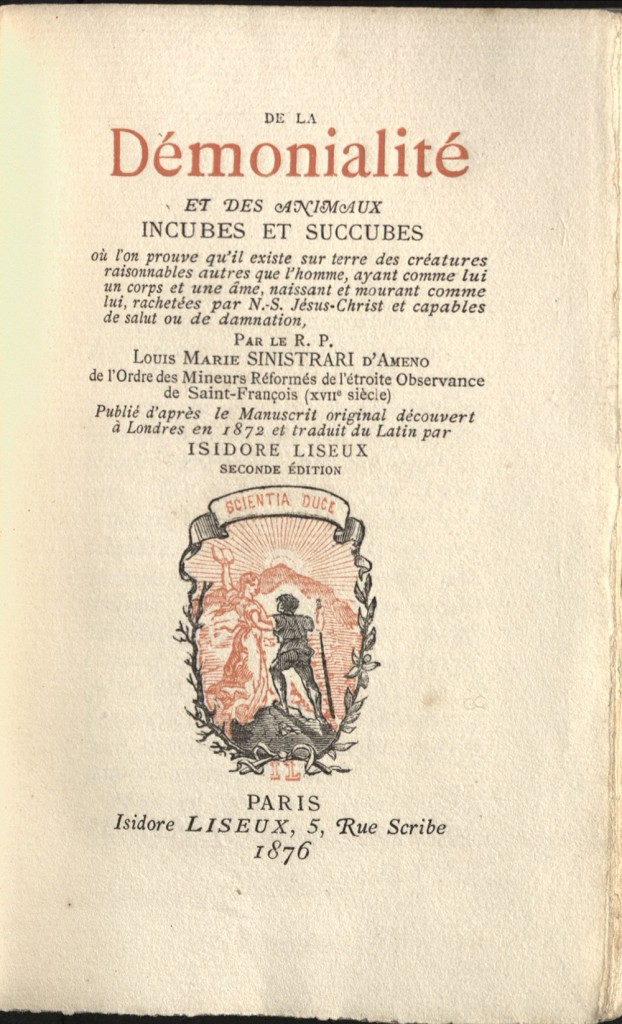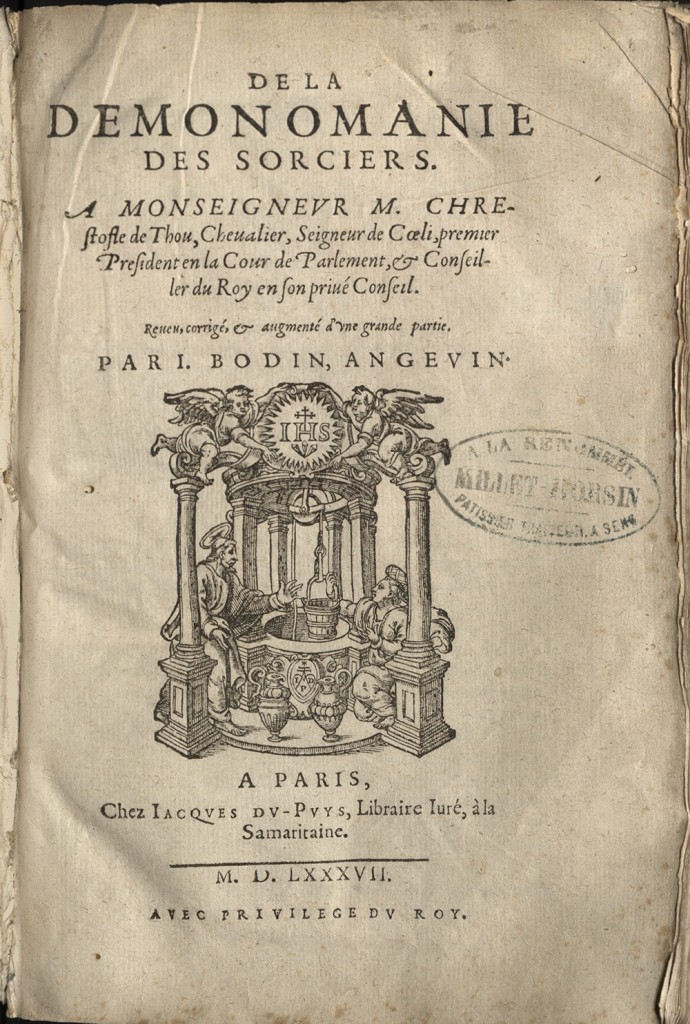This post is part of an ongoing series featuring items from the Julio Mario Santo Domingo Collection.
Though outnumbered by books on drugs and sexuality, the Santo Domingo Collection’s occult works are nonetheless considerable in number. Featured today are two early works on demonology, one by a French political philosopher and statesman, and the other by an Italian Franciscan priest.
Jean Bodin (1530-1596) espoused a number of unconventional views regarding religion and the state: he opposed papal influence over government, and was an early proponent of religious tolerance. On the topic of witchcraft, however, he was less forgiving. De la démonomanie des sorciers was first published in 1580; pictured here is a 1587 revision, one of ten that were printed between 1580 and 1604. In it, Bodin discusses broad concepts such as deals with the devil and the sabbat, as well as histories of individual sorcerers. He further describes at length his recommendations for legal procedure against accused sorcerers. At the time, the Parlement of Paris required one of three forms of evidence in order to proceed to interrogation: tangible evidence such as a written pact with the devil; a confession made freely (which is to say, not under torture); or witness testimony confirming an act of sorcery. Bodin felt that these rules were too strict, and that too many sorcerers were escaping execution: in the Démonomanie , he advocates that these rules be relaxed, under the belief that rumors of sorcery nearly always prove true.

Our second book is by Ludovico Maria Sinistrari (1622-1701), a priest and advisor to the Roman Inquisition. Sinistrari was an influential thinker on sexual sin; he authored works on homosexuality and sodomy. De daemonalitate et incubis et succubis, the work pictured here, did not see print in Sinistrari’s lifetime; the first publication of this 1680 manuscript was in Paris in 1875, with a French translation alongside the original Latin. (Houghton Library’s copy is of the second edition, from the following year.) It treats of demons and their exorcism, and particularly of incubi and succubi. In Sinistrari’s view, these beings are driven not by demonic motivation but by carnal desire; they also possess the human quality of self-reflection, and are somewhere between humans and true devils. Sinistrari posits that intercourse between an incubus and a human woman produces an unnatural, hybridized being; among his condemnations of Martin Luther is his accusation that Luther was the spawn of a devil. De daemonalitate, then, is an extended reflection on how the otherworldly and the erotic interact; the sexuality of demons is among the many links that interrelate Santo Domingo’s major collecting areas.
Jean Bodin. De la démonomanie des sorciers. Paris: Chez Iacques dv-Puys … , 1587. FC5.B6324.580df (B).
Ludovico Maria Sinistrari. De la démonialité et des animaux incubes et succubes. Paris: Isidore Liseux, 1876. BF1556.S5 1876.
Thanks to rare book cataloger Ryan Wheeler for contributing this post.

